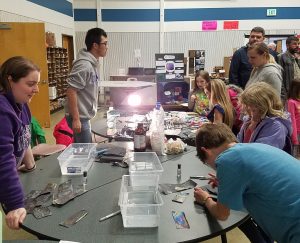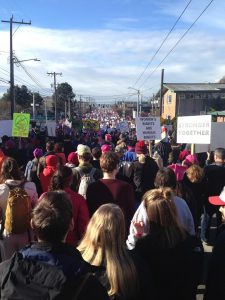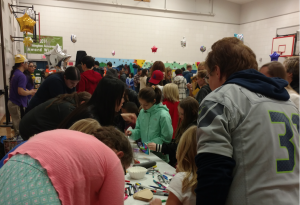Joy Delyria talked to us about easing the difficulties that scientific controversy presents. As a scientist, we are not here to change an individual’s mind using one conversation. I mean, if we do, that is awesome! However, realistically, that is usually not the case. Instead, each conversation is about portraying the science and exposing the common myths.
When starting this type of conversation, she first suggests to access one’s audience. How are they currently standing on the issue? Are they venters, on the fence, or on board? Talking to each different type of individual requires a different approach. Based upon the response, we are then able to establish frames of reference for audience.
The second major subject is the potential traps that need to be avoided. A story about cute critters, for example, tries to invoke empathy by creating a narrative. However, this story solely focuses on a tiny aspect of the issue at hand and makes the audience feel as if they are being manipulated. Another important trap to avoid is the crisis or doom and gloom stories that tend to overshadow the subtle message of the talk and to explain the issue at matter too complicated and too difficult to understand. This type of trap also mainly focuses on incidents and accidents as evidence, which does not support scientific discussions.
While these conversations are occurring, some things are to be advised. Most importantly, it is vital to listen to what they are saying, and making comments that assure that. This usually means that the audience is more willing to listen rather than shutting down the argument immediately. Secondly, scientific concepts need to be clarified using good metaphors. Typically, scientists would show the effects of CO2 as part of the green house gases that would heat up the earth whereas a simple example of a blanket would suffice and be more relatable to layman. Creating more CO2 gas is like a blanket; the more layers you put on it, the hotter it gets. Secondly, addressing their values is important in this conversation. Do they personally feel responsible for the environment? Or do they feel more responsible for the community? Addressing these values of responsible management and stewardship would encourage a more positive conversation about the environment.
In conclusion, Joy reminds us that it is not up to us as individuals to change one’s opinion. What we can do, however, is to collectively show them our scientific perspective on these controversial issues in a positive manner. And this by itself is considered success.
 d them in a bucket of water. The acetone then created different patterns on the book marker. These easy and fun demonstrations are a good way to teach children about diffusion and solubility.
d them in a bucket of water. The acetone then created different patterns on the book marker. These easy and fun demonstrations are a good way to teach children about diffusion and solubility. 
